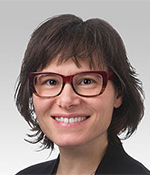61% of places available are filled under Match
The National Resident Matching Program (NRMP) Psychiatry Fellowship Match took place in January. Fifty-eight C-L Psychiatry certified programs offered 117 positions, and 71 incoming fellows were successfully matched.
This means 61% of all positions available for 2020 filled through the Match. 42% of Fellowship programs filled completely in the Match this year, a 25% decline since 2019.
In 2019, there were 82 positions filled, demonstrating a one-year decline for 2020 (though the number of filled positions has remained constant around 70 since 2016).
“There has been a steadily increasing trajectory of both new C-L Psychiatry Fellowship programs and spots at programs that were ‘all in’ with the NRMP Match,” says Fellowship Education Subcommittee chair Lisa Rosenthal, MD, FACLP.

In 2015, 50 C-L Psychiatry Fellowship programs certified 93 positions, whereas in 2020 there were 58 programs and 117 positions certified in the NRMP Match process.
This is the seventh year that applications to C-L Psychiatry Fellowship training have been managed through the NRMP Match.
Recruitment initiatives
“While the numbers this year have not continued the steep upward trend of the last decade,” says Dr. Rosenthal, “a more longitudinal perspective suggests that overall our specialty is doing quite well; as recently as 2006 there were approximately 32 applicants entering C-L Psychiatry Fellowships.”
The Academy membership has also expanded—from 665 in 2006 to 1,918 in 2020. Of the current members there are 416 residents and fellows, and 109 medical students.
“We continue to see substantial growth in annual meeting registration and feel confident that interest and engagement in C-L Psychiatry remains steady,” says Dr. Rosenthal.
“While our recruitment is strong compared with prior decades, the number of applicants to Fellowships has not kept pace with the expansion of positions. The Fellowship Education Subcommittee is working to understand and address this phenomenon.”
C-L Psychiatry Fellowship numbers have grown over time, while other Psychiatry Fellowship numbers are largely static or declining.
But, overall, the number of Psychiatry trainees choosing Fellowship training is low: only about 25% of PGY4 Psychiatry residents ultimately enter Fellowships in consultation-liaison, addiction, geriatric, or forensic Psychiatry (as compared with >80% of neurology residents who pursue advanced training.)
An American Psychiatric Association task force is working on this challenge of recruitment to Psychiatry subspecialty training. One possibility under discussion is the idea of “fast tracking” all Psychiatry Fellowships, not just in Child and Adolescent Psychiatry.
ACLP’s own committees are working toward more available online resources and exploring whether social media or email listservs with relevant academic content could be successful and sustainable.
And, there are many initiatives to engage and enhance trainee experience at the Annual Meeting, which can be found through our residents’ and fellows’ homepage here.
A trainee member of Dr. Rosenthal’s Fellowship subcommittee David Fipps, DO, presents his own ideas from personal experience to increase recruitment here.